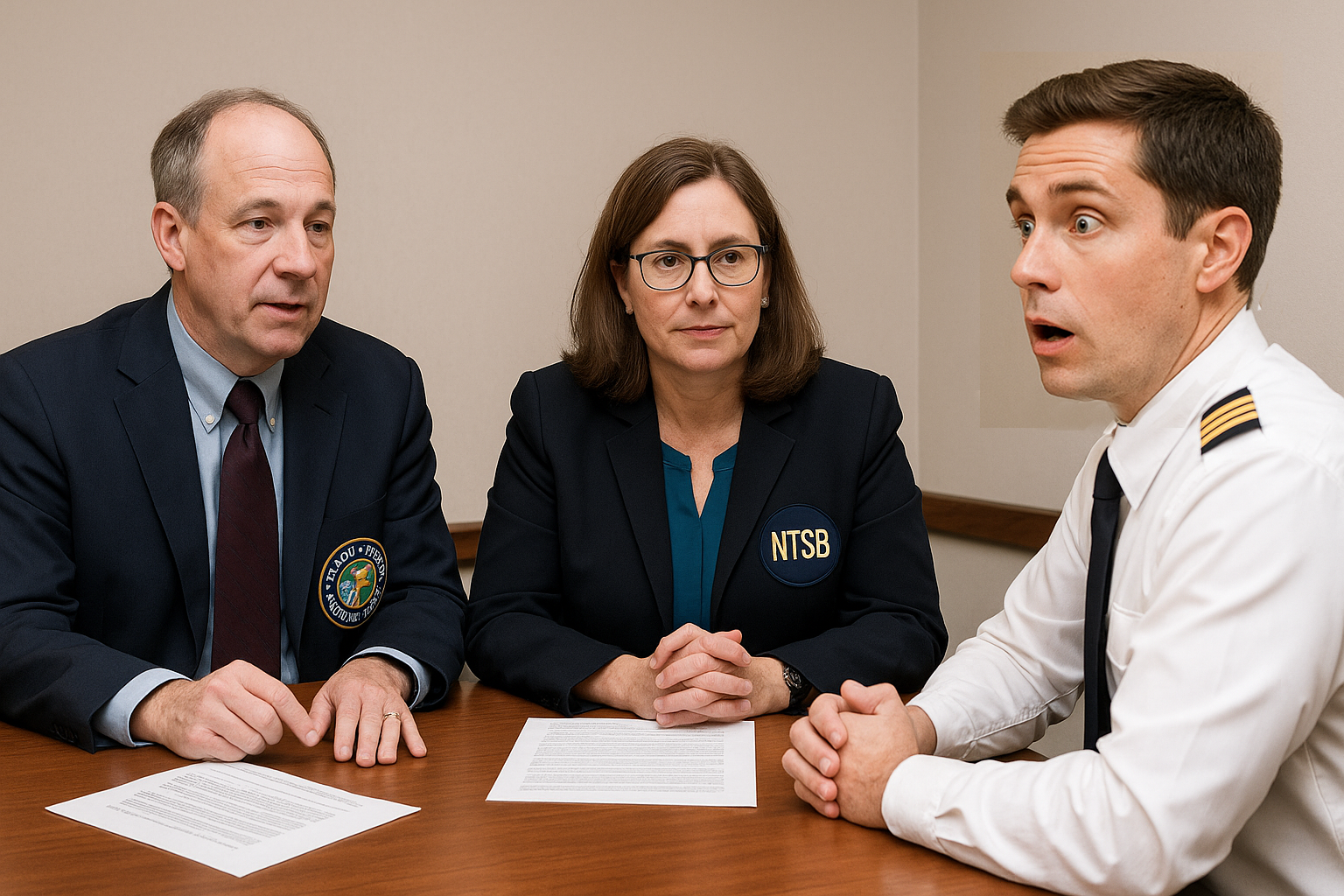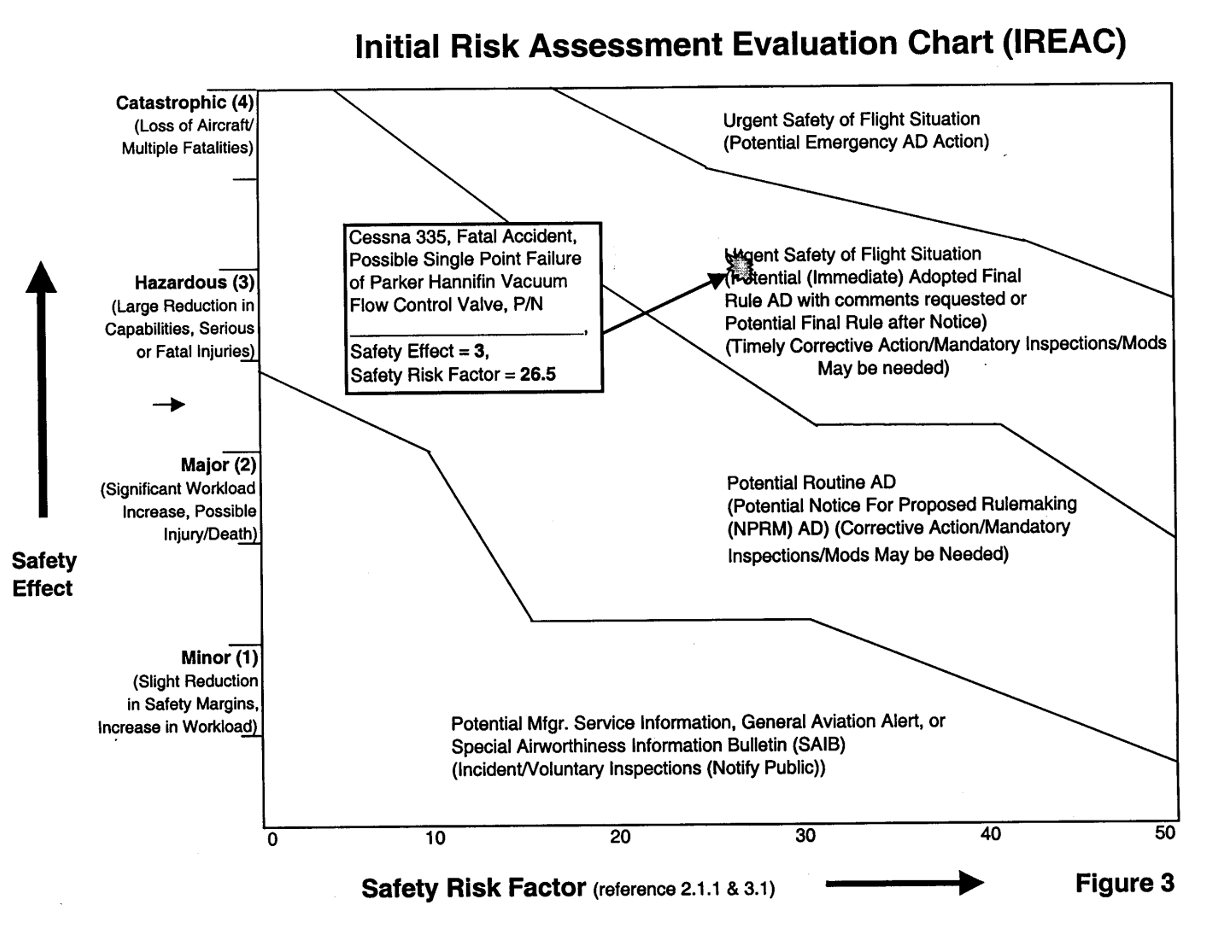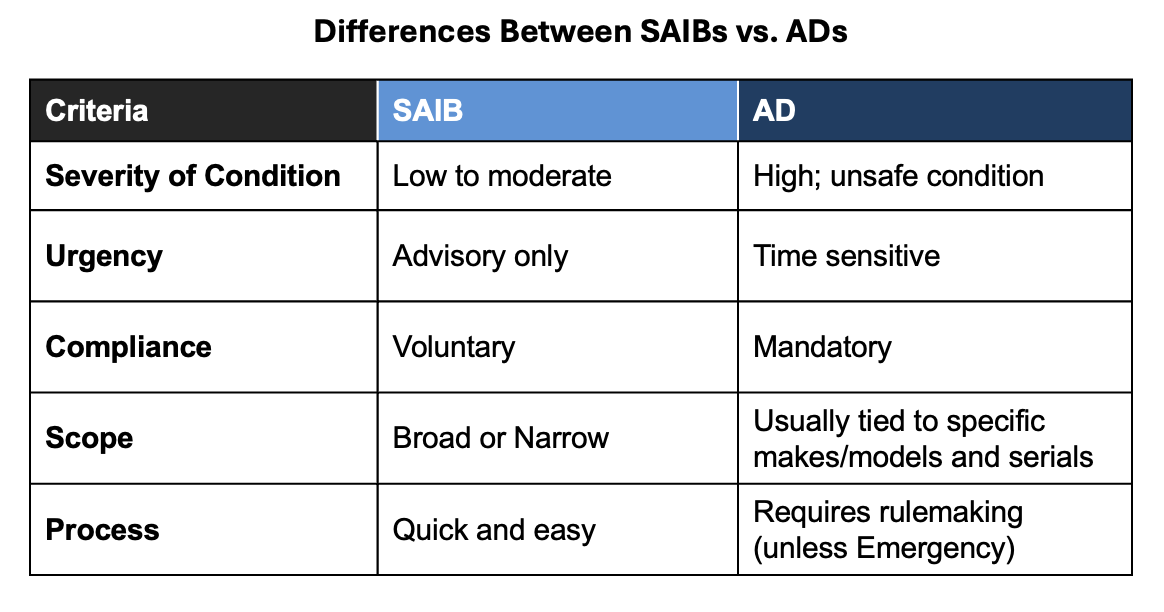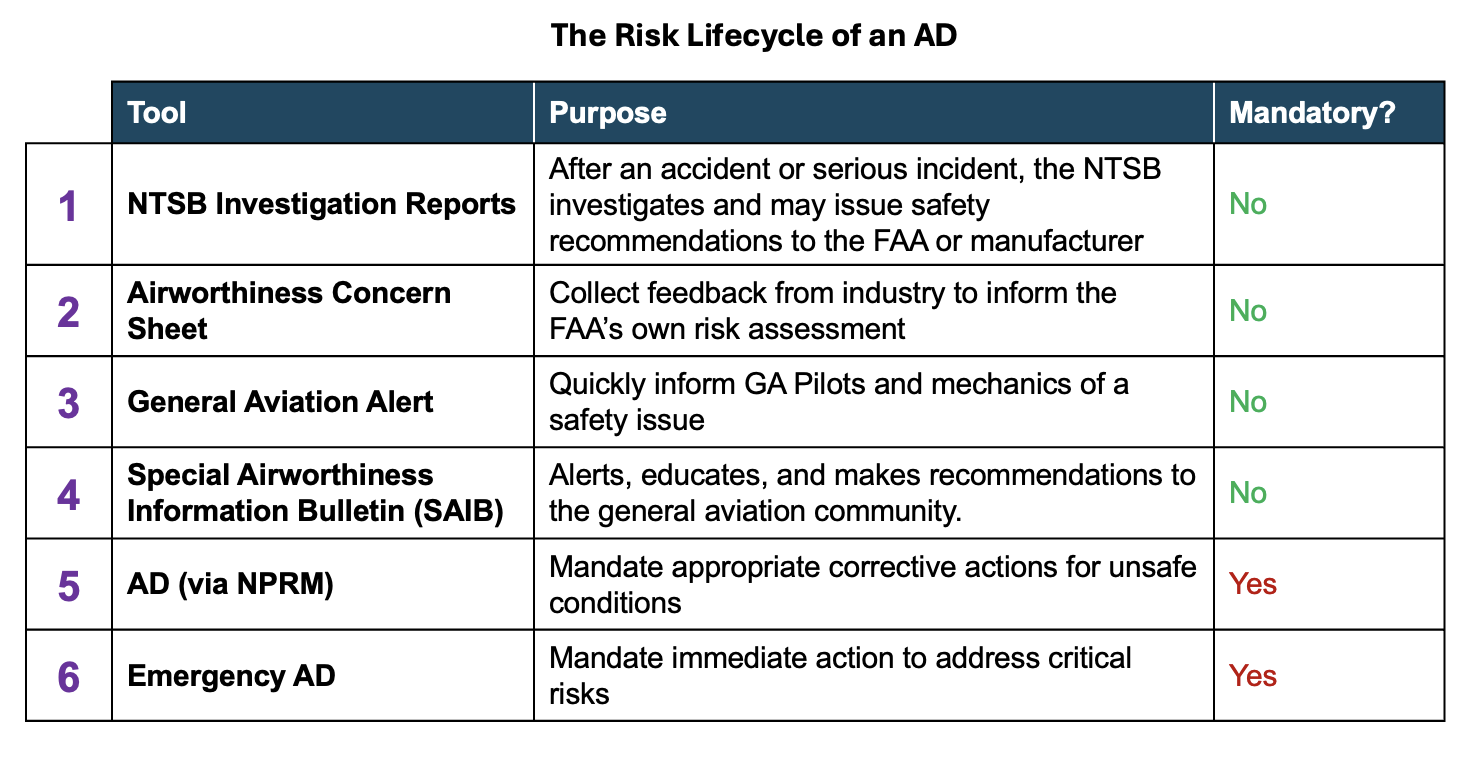
The FAA’s risk assessment and mitigation process is an open-ended safety management framework that evaluates potential safety hazards and determines appropriate corrective actions. While it isn't exactly perfect, the improvements in the General Aviation safety trends over the last few decades cannot be negated.
Here's a structured walk-through of the typical process, including how tools like Airworthiness Concern Sheets (ACS), General Aviation Alerts, Special Airworthiness Information Bulletins (SAIBs), Airworthiness Directives (ADs), and Emergency ADs are all used to drive risk reduction across General Aviation.
When a safety incident occurs (aka “triggering events”), a cascade of risk assessments, data collection process, and recommendations are set in motion. This risk assessment process is then mapped to an FAA-created “safety risk factor”. Both of these are mapped against an internal evaluation tool known as the Initial Risk Assessment Evaluation Chart, or IREAC (see below).

NTSB investigations and these early risk assessments may yield a series of safety recommendations. These recommendations, often highlighting design, maintenance, or operational deficiencies, are then used by the FAA and/or manufacturers to determine if these deficiencies represent an unsafe condition likely to develop in other aircraft. If more data is required, sometimes the FAA will initiate an Airworthiness Concern Sheet, or “ACS”, to collect feedback from design approval holders, owner/operators, mechanics, and the general public. These ACS help the FAA determine how big of an issue this might be and whether an “unsafe condition” exists that may justify further action, like an SAIB or an AD.
For example, here are several ACS from the last 12 months:
If the FAA can confirm an unsafe condition, but cannot meet the conditions required for an AD, it may issue a Special Airworthiness Information Bulletin (SAIB). SAIBs act as the FAA’s early-warning, non-regulatory path to highlight potential safety issues that do not pose an immediate threat to safety, i.e. isolated events, non-systemic safety issues, and issues that may have been adequately addressed through other channels (i.e. OEM mandatory service bulletins or recalls).

Not all SAIBs stem from an ACS – they can be created from SDRs, accident/incident data, manufacturer feedback and recommendations, field reports, NTSB recommendations, and field inspection data. However, if the FAA is unsure about the level of risk, scope of the issue, or frequency of the problem, the ACS is a useful tool.
Finally, if data from the ACS, NTSB, or the FAA supports the finding of an unsafe condition – a notice of proposed rulemaking (NPRM) is made to support the release of an Airworthiness Directive. This NPRM often cites NTSB recommendations and data collected to support the issuance of an AD and its mitigation.

The NPRM process is also used to collect public feedback and industry input on the proposed compliance before it becomes legally binding. This invitation for public comment, usually 30-60 days, allows the FAA to fine tune the AD before it is released into “the wild” (unnerving pilots, mechanics, and all affected parties!). If an emergency condition exists that requires immediate action, the FAA may move to release an "Emergency AD", bypassing the typical NPRM process under the authority of the FAA under Title 14 CFR 39.5 and 39.13.
Even after an AD is released, the FAA may continue to track the safety issue and/or collect further data, and they’ve often made changes or amended ADs well into the future as things change (and continue to change). These changes include scope (adding new make and models), changing compliance times and methods, and clarifying the intent of the AD when the language is unclear. As you can see - aviation safety is a dynamic process that evolves with feedback and data.
As partners in safety to the General Aviation community, the FAA, and Civil Aviation Authorities around the world, we are committed to finding ways to make this information more readily accessible. If you are interested in learning more about how our software enables A&Ps, IAs, operators, and owners to be on top of aviation safety and compliance, be sure to try our 10-day free trial here.